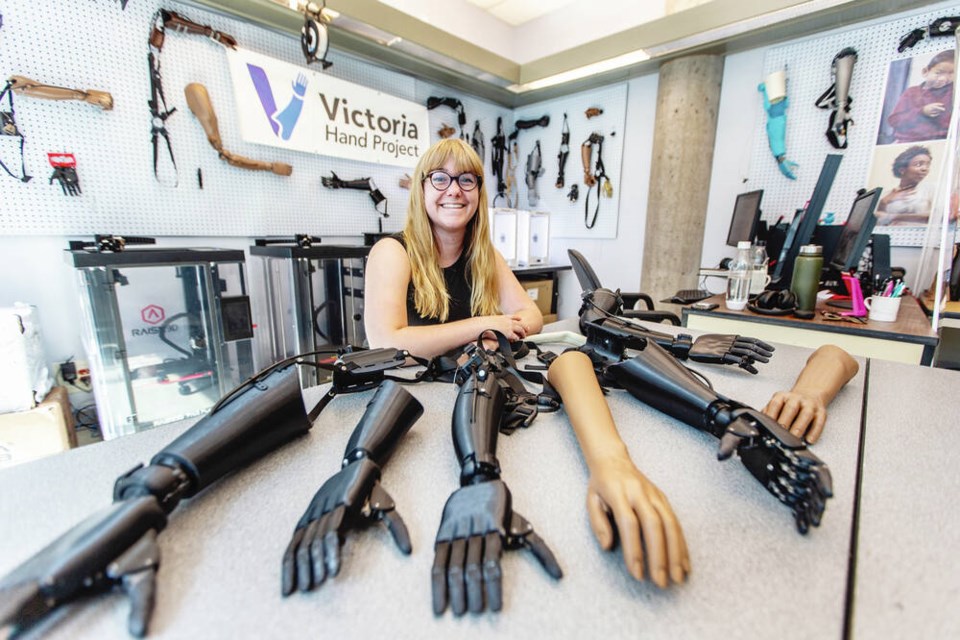The Victoria Hand Project is reaching out to give a hand to the many Ukrainians who have lost hands and upper limbs due to the ongoing conflict in their country.
The project, which makes low-cost prosthetic hands in developing countries, began as a research effort at the University of Victoria in 2014. It branched out on its own in 2015 and this year became a registered charity in the U.S. and Canada.
It is in eight developing countries, as well as Canada and the U.S.
Using partners in the countries it serves, it helps to create prosthetic hands and arms using 3D printers. Where a conventional prosthetic hand can cost cost between $2,000 and $3,000, their 3D version can be manufactured for as little as $300.
The raw materials needed to make a hand costs approximately $130, with the remainder reflecting the cost of labour to custom fit the limb or hand to the client.
Currently operating in countries such as Nepal, Guatemala and Ecuador, the Victoria-based charity is looking to expand to Ukraine.
“We are currently looking for people who know people in Ukraine,” said Kelly Knights, a biomedical systems designer at the charity. “We are primarily engineers. We are looking for a clinical as well as a technical partner in that country.”
She estimates it will cost $69,000 to set up the operation — or less if the 3D printer is donated. But they aren’t looking for donations at this time.
“We will need the funding, but right now, we need a partner. We hope to establish in Ukraine or in a country close by.”
The project typically supplies each country with a donated 3D printer. It also supplies a computer capable of running the software that controls the 3D printer, a camera for scanning the limb or plaster impression and the raw materials needed for the printer to create the hand.
The local partner assesses the client, takes measurements and a plaster impression for the prostheses and fits the finished product onto the person.
The project doesn’t yet know the extent of demand for their services in Ukraine, but want to be ready when they open their Ukrainian operation.
Citizens of Ukraine will join 200 individuals around the world who have benefited from the project since its inception.
The hand the project initially created in 2014 has undergone four major design changes, with the latest one incorporating metal in it for the first time for greater strength.
The project can create upper and lower arms as well as four models of hands, including one designed for children.
Their most popular model is one where the operator can get the fingers of the hand to open and close by shrugging their shoulder.
Another model is designed to be more life-like, but not functional.
“It is popular in countries where there is still superstition or stigma attached to a person who has lost limbs,” said Knights. “They may have a functional model they use in private, but when they venture out in public, they prefer to have a cosmetic hand so as not draw attention to their condition.”
>>> To comment on this article, write a letter to the editor: [email protected]



